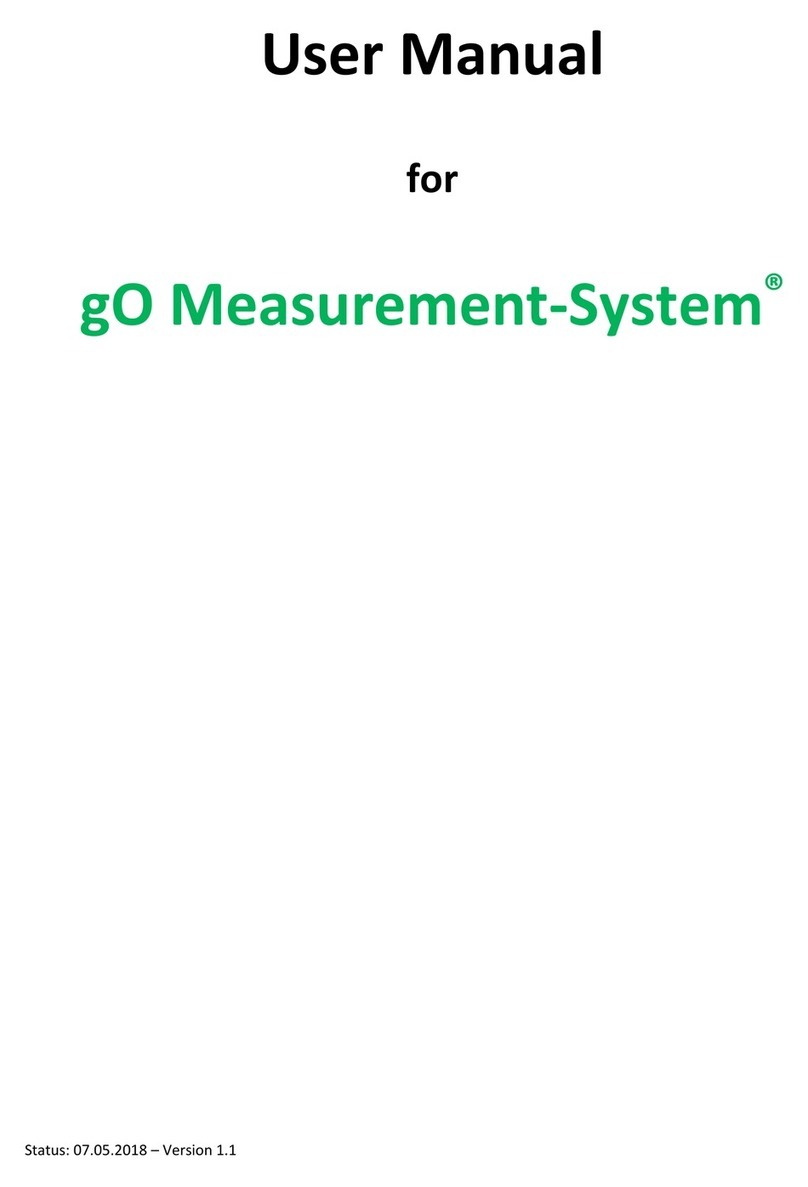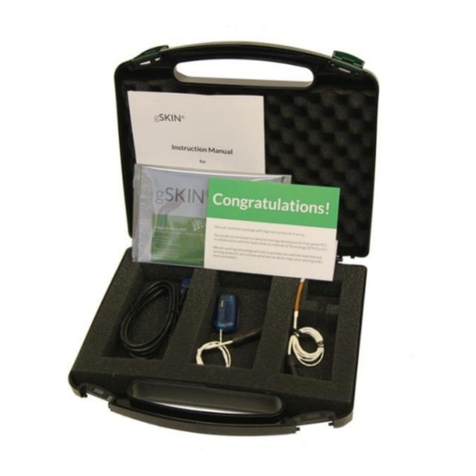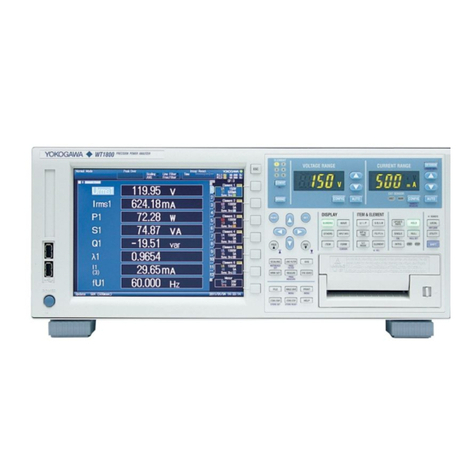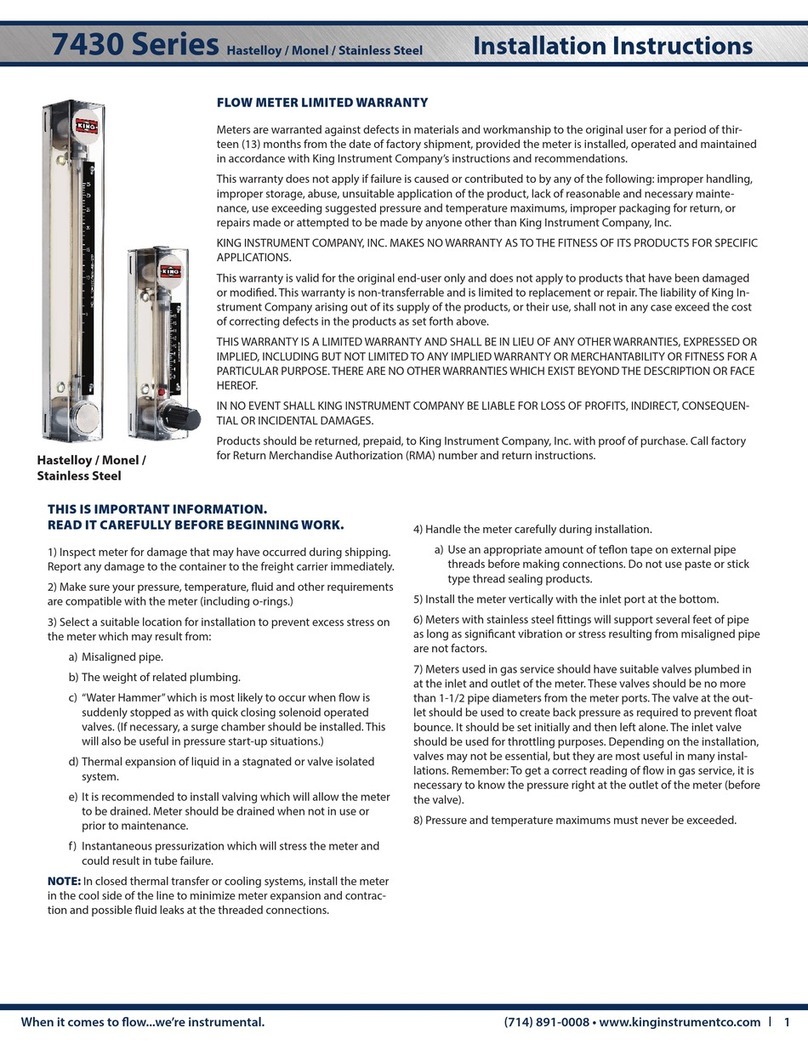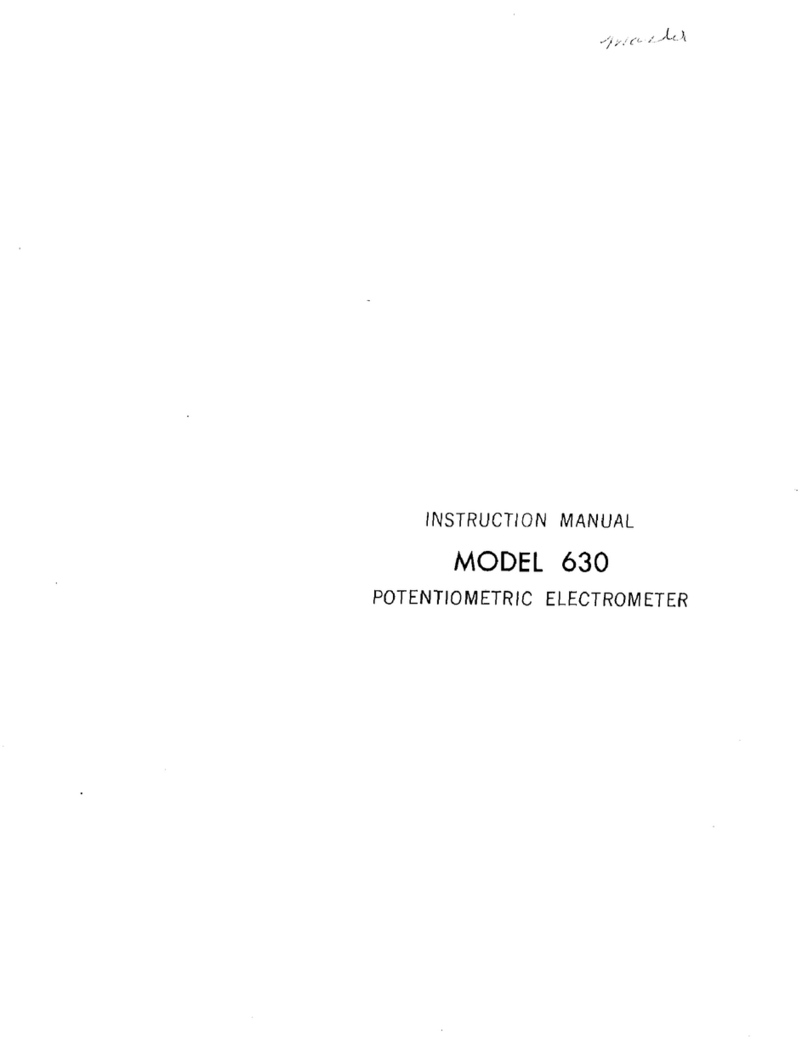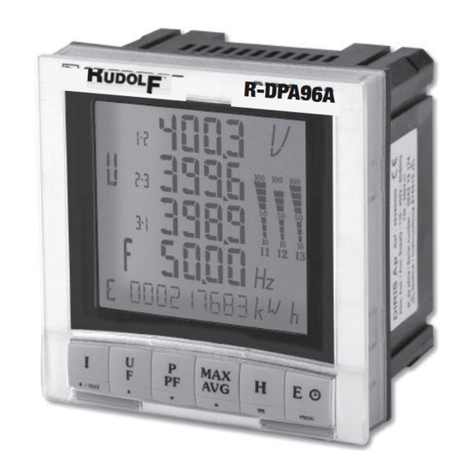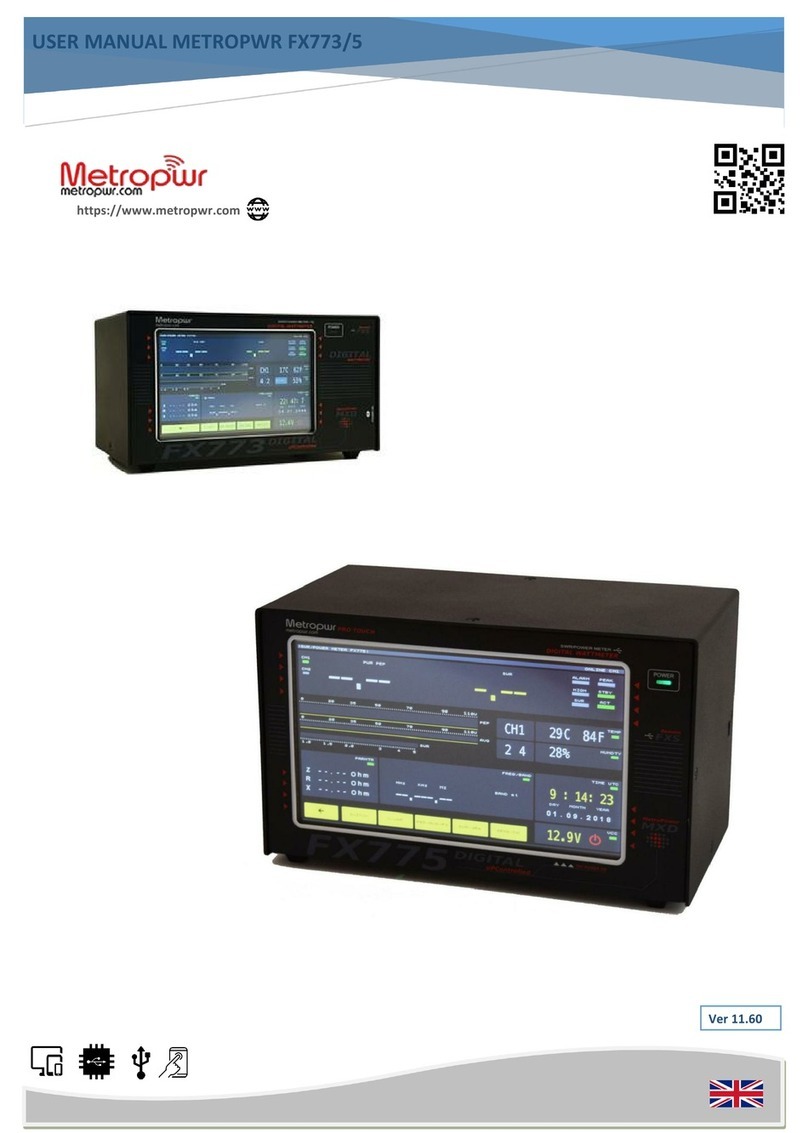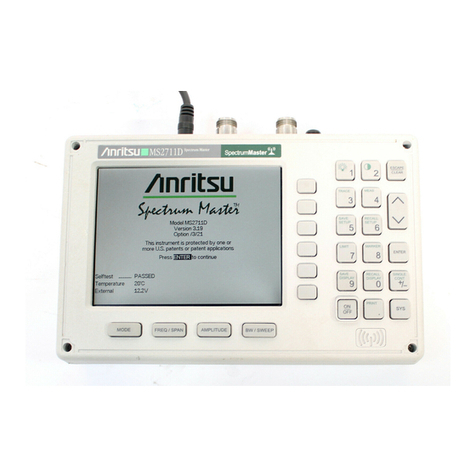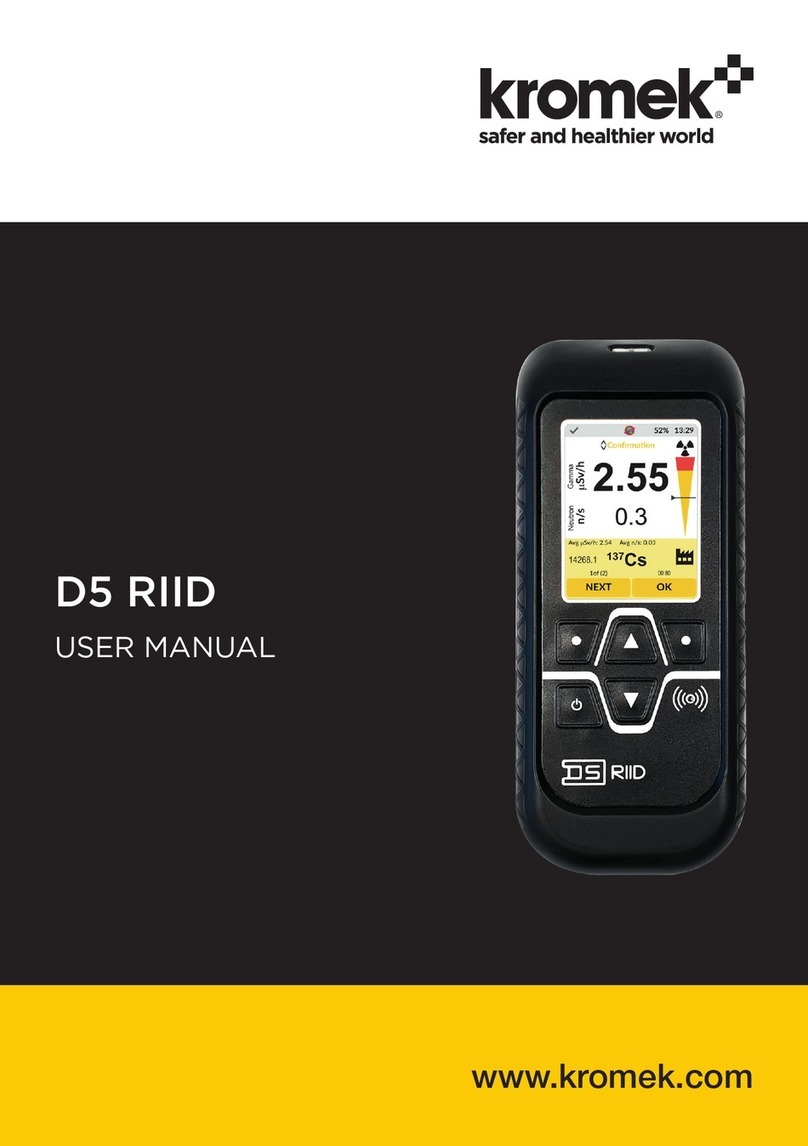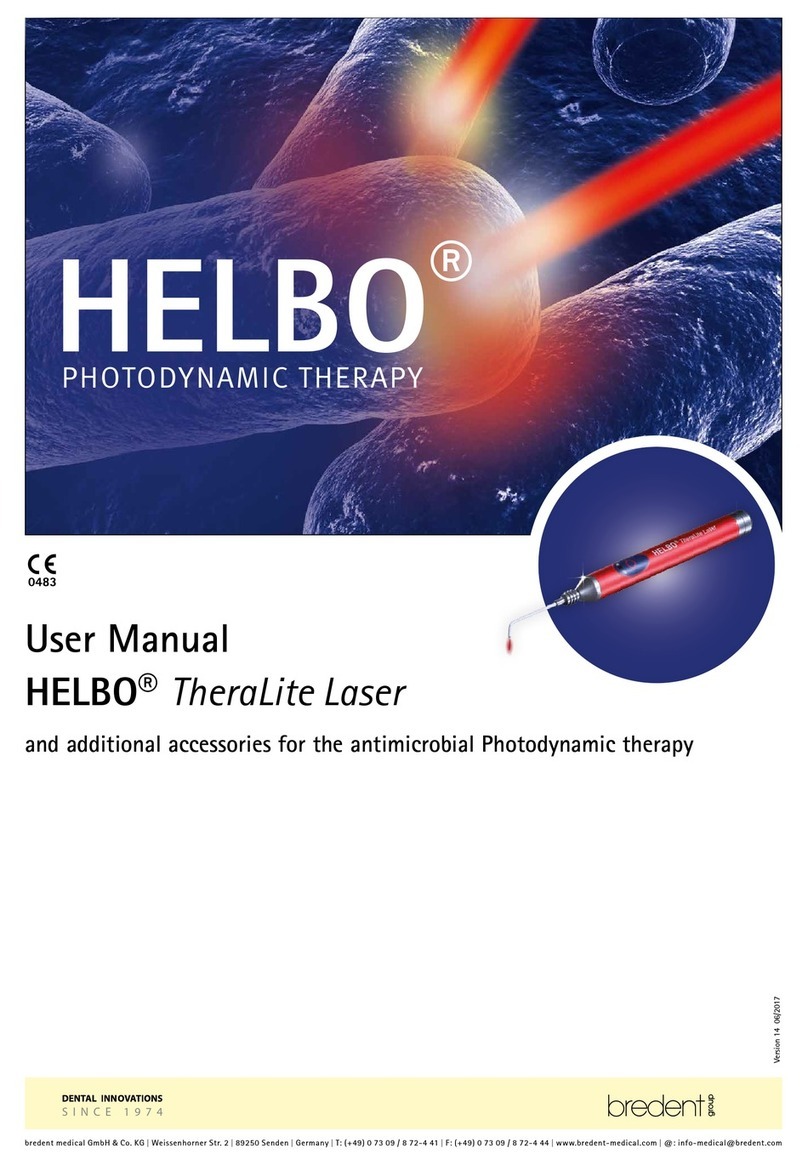greenTEG GO MEASUREMENT SYSTEM II User manual

gOMS II
greenTEG
GO MEASUREMENT
SYSTEM II
USER MANUAL

CONTENTS
(I)
01
02
03
04
OVERVIEW
SET-UP
ANALYSING MEASUREMENTS
APPENDIX

KIT CONTENTS
1 Base Station
2 Nodes
1 Inner Wall Heat Flux Sensor
1 Outer Wall Surface Sensor
2 Ambient Temperature Sensors
2 Ambient Sensor Mounting Clips
1 Roll of Double-Sided Adhesive Tape
1 Bag of Double-Sided Adhesive Water
Repellent Strips
1 Scissors
1
NOTE for customers who have purchased more
than one pair of nodes:
For every extra pair purchased, the products
highlighted in green will double:
For example 2 pairs of Nodes (4 nodes) will
mean:
2 Inner Wall Sensors, 2 Outer Wall Sensors, 4
Ambient Sensors etc.
Upon opening your gOMS II Travel Case, you should find the following contents:

gOMS II nodes have a battery lifetime of (at least)
2 years, and are adaptable to both Type 1
sensors, and Type 2 sensors.
Any node can take any sensor combination, and
still remain adaptable for other sensors.
1x combined heatflux / surface temperature
sensor
1x ambient air temperature sensor
1x surface temperature sensor
1x ambient air temperature sensor
NODE
INNER NODE - TYPE 1
OUTER NODE - TYPE 2
NODES OVERVIEW
There are two node configurations required for the measurement of the U-Value and/or R-
Value.
One node is to be placed indoors (Type 1), and one node outdoors (Type 2):
2

BASE STATION OVERVIEW
3
Used to navigate Base Station interface.
The toggle button allows the operator to
navigate through the device information in two
ways.
TOGGLE BUTTON
gOMS II Base Stations have an autonomous Battery Life of 2 days, and can be
connected to up to 10 Nodes at once.
For protection, it is covered in a removable silicone sleeve.
The antenna should not be removed at any stage.
Press toggle button once to go to the next page of information, within the same category.
Hold down the toggle button to see other menu options, and release to go to highlighted
option. For instance, if you want to exit the main menu, and go to recording options. Hold
down the toggle button until "Record" is highlighted, and let go of the toggle button to
move to this page.
NAVIGATION #1: "SINGLE PRESS"
NAVIGATION #2: "LONG PRESS"

1.
2.
2. 3.
1.
BASE STATION OVERVIEW
LED DISPLAYS
1. Data logging Status
R+ = Recording, R- = Not
Recording
2. Nodes registered on Base
Station
+ = Measurement has been
instantaneously received from
this node
HF = Heat Flux [W/m2]
Ts = Surface Temperature [°C]
T = Ambient Temperature [°C]
A = 1st Node Port
B = 2nd Node Port
NODE INFORMATION
MAIN MENU OVERVIEW
Red: Measurement is received
from a node
Orange: Base Station is charging
Blue: Base Station is recording
1.
2.
3.
4

Displays Software Version, Base
Station Serial Number.
Date and Time on next page.
INFO
Node Overview
Press toggle button to see individual
node information.
MAIN MENU OVERVIEW
Recording Status.
Press once to Start/Stop Recording.
Hold down button for option to
cancel.
RECORD
BASE STATION OVERVIEW
5

Resets Nodes registered on Base
Station Press once to Reset. Hold
down button for option to cancel.
RESET
Displays WiFi Connection Status.
Press once to Disconnect/Reconnect.
Hold down button for option to cancel.
WIFI
Base Station Display Screen turns off.
NOTE: This does not stop recording, but
turns off the screen display. Screen
display will also turn off when
unattended for some time.
OFF
BASE STATION OVERVIEW
6

01
02
03
04
OVERVIEW
SET-UP
ANALYSING MEASUREMENTS
APPENDIX
CONTENTS
7

Node Mounting:
For a U-Value / R-Value Measurement, mount an inner node (type 1) configuration and
outer node (Type 2) configuration on opposite sides of your building element.
See "Nodes Overview" at beginning of manual for more information.
1. Mount the node to the wall using the provided double-sided adhesive roll tapes, or
place it on a suitable spot next to the wall (for example a shelf). Please ensure that the
adhesive tape removal tabs stick out from the side of the measurement node.
2. Mount the Inner sensor with a strip of double-sided adhesive roll tape.
NOTE: It is important that the removal tab points to the side of the sensor and not to the
direction of the sensor cable.
3. Mount the ambient air temperature sensor using the provided sensor holder and one
piece of double-sided adhesive tape.
NOTE: The instructions in this section are only a quick summary of node installation
procedures. It is necessary to read the gOMS II Mounting Recommendations manual for
more detailed instructions and precautions on all gOMS mounting options provided by
greenTEG.
Caution: Sensor accuracy only performs as per specifications if greenTEG mounting solutions
are used. Any other non-greenTEG approved mounting solutions will result in measurement
errors and possibly even safety issues.
Optional: Use thermographic imaging to help identify representative/interesting spots for
the heat flux sensor placement on your building element
2.1
Note for various Mounting Conditions: Further instructions are available in the Mounting Guide.
Wet Conditions: Use the mounting strips provided
Rough Surfaces: Mount the node at the wall with thermal putty (Available on Request from
greenTEG).
Node Mounting Ambient Clip
Mounting
Correct Mounting Setup
INSTALLATION OF NODES
9

There are two methods for assigning your nodes to your base station.
Connect your base station to your PC and open your gOMS II software.
Click Configuration - Here your Assignment Options will be displayed.
NODE ASSIGNMENT TO BASE STATION
2.2
Option 1: Up to 10 nodes within proximity of the Base Station will be assigned with the Base
Station. This is suitable when you have a maximum of 10 nodes in your environment.
Option 2: Manually Enter the Serial Numbers (S/N) of the nodes for pairing. This number is
found on the front of your nodes.
Once your preferred assignment method is selected, click Write at the bottom of the screen
so confirm this. To cancel, click Home.
NOTE: On the bottom of the Configuration page you will see WiFi options, You may enter your
WiFi details manually into this box if you wish. This feature will not fully be realised until the cloud
storage feature is released.
10

2.3
Start your Measurement by clicking Start logging
A Blue Light will flash from the Base Station logger to indicate that it is in logging mode.
NOTE: If you wish to check that measurements are being taken, then click Real-time
measurement on the Home Page to see the incoming signals. Readings may not show up
straight away if node is set to send measurements ever 10 mins however.
You may now disconnect the Base Station from your PC. It is recommended that you keep
your Base Station charging during measurements, as the Autonomous Battery Life is
approximately 48 hours; Below the minimum required 72 hours for an ISO 9869 conforming
measurement.
BASE STATION PLACEMENT RECOMMENDATIONS
The ideal placement for the Base Station is in a direct line-of-sight with the measurement
nodes.
greenTEG observed an indoor range of 50m with the signal travelling through concrete
walls, and an outdoor signal range of over 200m.
This Range can worsen with the amount of obstacles between the measurement
nodes and the Base Station. Range is particularly worsened by Thick Walls, and those
made from Concrete.
If Measurements are being taken on Different Floors/Stories, avoid placing the Base
Station directly above/below Nodes.
STARTING YOUR MEASUREMENTS
11

CONTENTS
12
01
02
03
04
OVERVIEW
SET-UP
ANALYSING MEASUREMENTS
APPENDIX

ACCESSING YOUR MEAUSUREMENTS
3.1
There are two methods for reading your measurement records.
Base Station is plugged into PC.1.
Click Read record.
If your Base Station is still recording you will be given the option to end the measurement. You
can only analyse reports of measurements that have ceased recording.
A list of all recorded measurements stored on the Base Station will be shown. Choose your
desired File and click Readout.
2. Reading Files already Stored on Your PC
Click Analysis to access gOMS II Measurement Files already stored on your PC.
13

ANALYSING YOUR MEAUSUREMENT
3.2
To view a Measurement, select the corresponding Inner Node and Outer node pairs you would
like to analyse. The values shown to the right of the Serial Number (S/N) will indicate the starting
measurement Date and Time, and the ending measurement Date and Time.
Select the Measurement Period that you wish to analyse. This can be done by either manually
entering the time at the top of the page, or by sliding the bars horizontally along the graph.
In the legend on the righthand side of the graph, you will see each node's measurement.
When your desired period is selected, click Next.
14

ANALYSING YOUR MEAUSUREMENT
3.3
All Relevant Details of your Analysis can be found at the top of your Graph. The most important
ones being the U-Value and R-Value, highlighted in Bold.
Underneath these values, the ISO conformity is displayed.
You can select and deselect which values you would like displayed on the graph, with the legend
on the righthand side of the graph.
Click Report to create a pdf of your Analysis.
On the next page, you will see a preview
of your pdf, with the option to print, or
go back to the previous page.
15

ANALYSING YOUR MEAUSUREMENT
Non-Conforming ISO Measurements
3.3
If your measurement is not conforming to the ISO-9869 standard, it will be displayed as seen
below.
The reason for non-conformity is displayed upon report generation:
16

CONTENTS
17
01
02
03
04
OVERVIEW
SET-UP
ANALYSING MEASUREMENTS
APPENDIX

Appendix A
Requirements according ISO 9869-1:2014
4.1
installed close to thermal bridges, cracks or similar sources of error
under direct influence of a heating or of a cooling device or under the draught of a fan
Rain
Snow
Direct solar radiation
Requirements according ISO 9869-1:2014
The standard ISO 9869-1:2014 states in section 6 how a measurement apparatus must be installed for proper
measurement and in section 7 how the measurement data must be analysed.
The ISO standard highlights the following important points for the installation:
• Heat flux meters (HFM) and temperature sensors shall be mounted at a location that is representative
of the whole element (previous inspection using thermography cameras are mentioned).
• HFMs shall not be
• The outer surface of the element should be protected from
• Protection of the outer surface may be achieved through artificial screening.
• Data acquisition intervals should be less than 30min.
The analysis of the measurement data is separated into two methods. The first analysis method (the average
method) is introduced in section 7.1 of the standard. It is the method used in the current software. The
average method is valid if certain conditions are met:
• The heat content of the element is the same at the beginning and at the end of a measurement
(same temperatures and moisture distribution)
• The HFM is not exposed to direct solar radiation.
• False results might be obtained if the external face of the element is exposed to solar radiation
• The thermal conductance of the element is constant during the test
If the above conditions are not met, misleading results can be obtained. It is the responsibility of the user to
ensure that the conditions are met.
Data analysis (average method) for heavier elements with a specific heat per square meter greater than
20kJ/(m2K) according to section 7.1 shall be carried out over a period of integer multiple of 24h.
The measurement shall be ended only when the conditions are fulfilled as follows:
1. Duration of the measurement > 72h
2. R-value obtained at the end of the test does not deviate more than 5% from the value obtained 24h
before (dR24)
3. The R-value obtained during the first 2/3 of the overall measurement period (which needs to be an
integer of 24h, too) does not deviate more than 5% from the values obtained during the last 2/3 of the
overall measurement period (also an integer multiple from 24h).
4. The change in heat stored in the wall is <= 5% of the heat passing through the wall
While test conditions 1 – 3 are validated by greenTEG’s software, the condition 4 is not tested. greenTEG’s
measurement system does not allow measurement of heat storage changes of the wall.
The appendix highlights key elements of the ISO 9869-1:2014 on which the data analysis of the
software is based. Even though the software is capable of analysing the measurement data, it is the
user of the system who has to ensure applicability of the ISO test conditions to measurement data.
The most important aspects for an ISO 9869 compliant U-value measurement are listed. For more
detailed information please refer to the complete ISO 9869 documentation.
18

Appendix A
Requirements according ISO 9869-1:2014
4.1
Always use the supplied double-sided adhesive tapes to mount the sensor since it has been calibrated for it.
Inside and outside sensors must be mounted exactly opposite to each other at the same wall for good
results.
Use the supplied sensor clips to mount the sensor.
Avoid direct solar radiation onto the sensor.
Place the sensor between 5-10cm next to the heat flux or surface temperature sensor.
The duration of the measurement should be at least 72h.
A temperature difference between inside and outside temperature of at least 5°C during the entire period
is recommended.
If surrounding conditions are strongly fluctuating it might take longer than 72h to assess an ISO 9869
compliant U-value. In this case a multitude of 24h is recommended on top of the 72h time period.
Mounting of the surface temperature sensor and the (combined) surface temperature/heat flux sensor
Mounting of the ambient temperature sensor
General
DISCLAIMER: The above restrictions, recommendations, materials, etc. do not cover all possible
cases and items. This document is not to be considered complete and is subject to change
without prior notice. In particular, greenTEG assumes no liability for damages caused by the
installation/de-installation of the system to/from the wall.
Charging of the Measurement System
With the supplied power supply, it takes approximately 5 hours to charge the Base Station, however we
recommend it not to be unplugged as battery life is only 48 hours.
The node battery lasts approximately 2 years and can be replaced once empty.
For additional chargers and batteries visit our e-shop or contact us.
19
This manual suits for next models
1
Table of contents
Other greenTEG Measuring Instrument manuals
Popular Measuring Instrument manuals by other brands

WATANABE ELECTRIC INDUSTRY CO., LTD
WATANABE ELECTRIC INDUSTRY CO., LTD AP-101-11 instruction manual
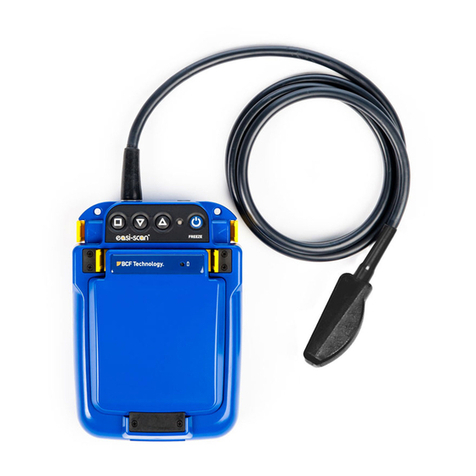
IMV
IMV Easi-Scan quick guide
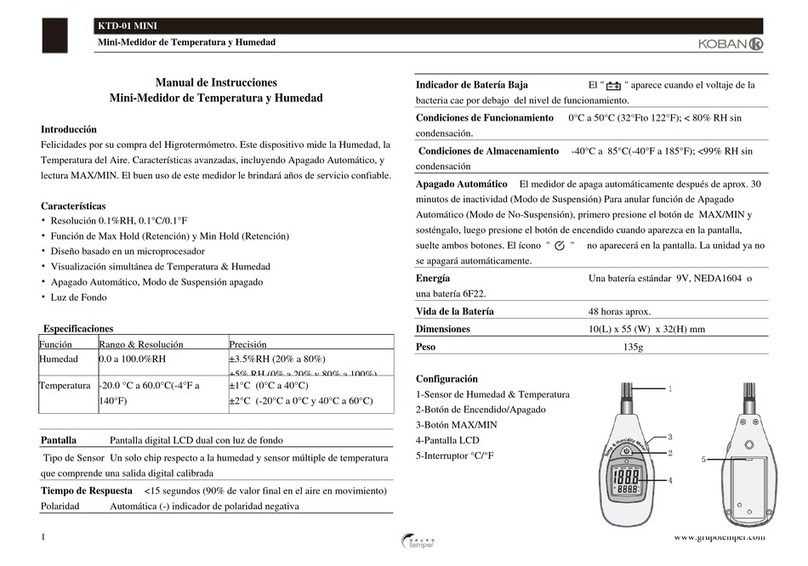
Temper
Temper Koban KTD-01 MINI user manual
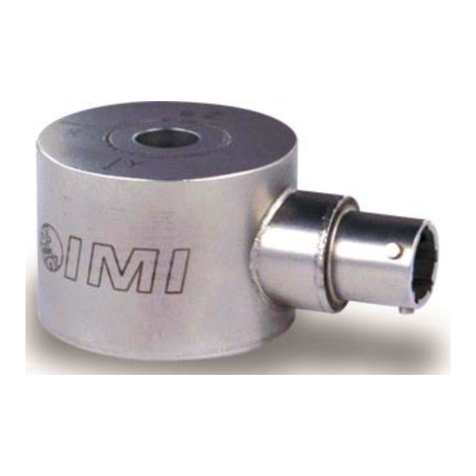
PCB Piezotronics
PCB Piezotronics IMI Sensors 604B32 Installation and operating manual

YTL
YTL DDS-1Y user manual
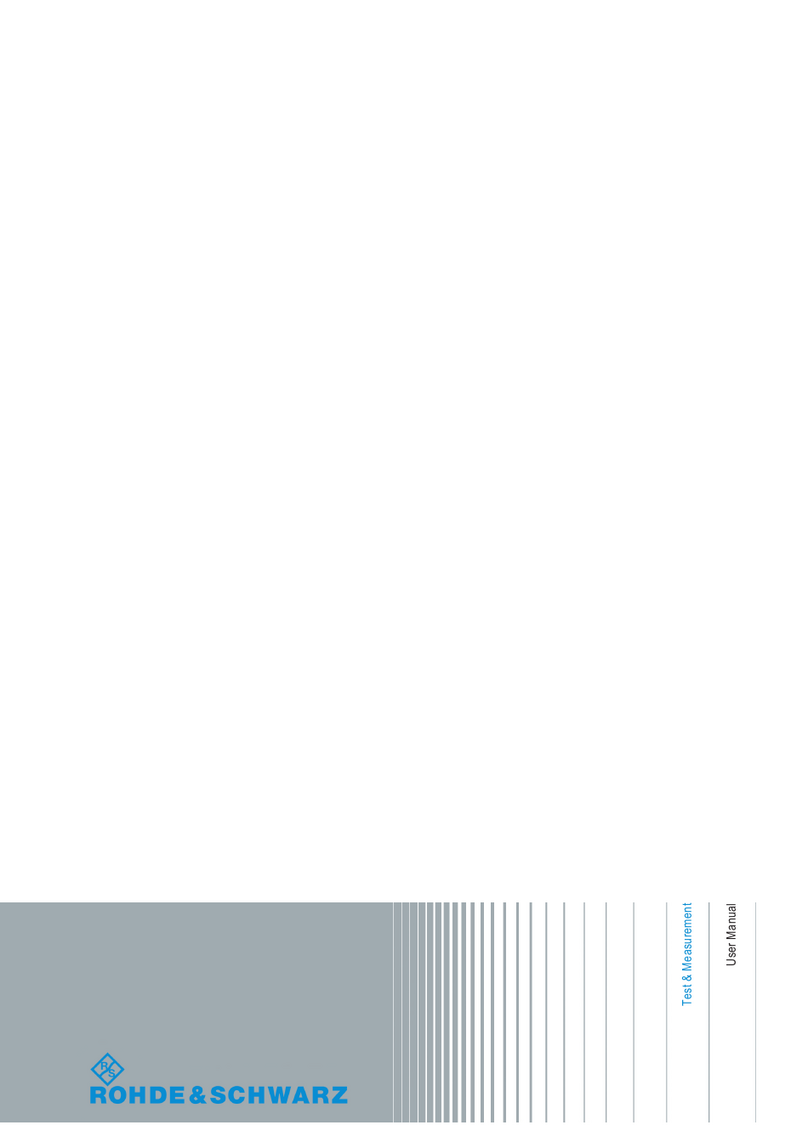
Rohde & Schwarz
Rohde & Schwarz CMW-KM75 Series user manual
